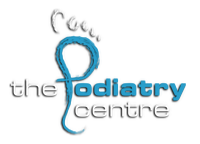Corticosteroid injections VS Radial Shockwave Therapy for Heel Pain
Which is better?
Do you suffer from debilitating heel pain that you have been trying to get rid off for months?
Are you trying to find out what possible options you have for treating persistent heel pain?
Well, before you decide on a certain course of action, have a read of this little blog, it might just be what you’re looking for!
For long, it has been a highly debated topic amongst health professionals as to whether corticosteroid (also known as “cortisone”) injections really do help your heel pain, or just masks the symptoms. Another area of debate has been as to what is more effective; corticosteroids injections or radial shockwave therapy sessions?
With a plethora of research behind radial shockwave therapy and corticosteroid injection, a study was performed comparing the results of both these treatment options. Through this blog, we will discuss the major findings of this article in hope of making your heel pain come to an end.
Firstly, let’s do a basic comparison of the science behind these two treatments.
Cortisone is a hormone that is naturally produced by your body’s adrenal gland as a response to stressful situations. Cortisone injections contain a synthetic version of this substance and are administered by a needle directly into the injured plantar fascia ligament, or into the side of the heel. The aim of this injection is to act as an anti-inflammatory booster, which aims to decrease inflammation around the plantar fascia ligament (which commonly causes the heel pain) ultimately to provide pain relief. As good as this option may sound; it is not a solution for the root cause of the pain, but merely a band-aid solution. Corticosteroid injections do not help every patient suffering with heel pain. Some people will experience significant, temporary pain relief while others will not experience any benefits at all. The long-term effects of cortisone use are not well documented, but some studies indicate that it can result in deterioration of tendons and cartilage.
Radial shockwave therapy is a treatment modality involving the practitioner using a hand-held probe and targeting the painful area (in this case, the heel). The probe delivers a very high amount of energy in the form of pressure and sound waves, which expand as they enter the foot. These sound/pressure waves aim to stimulate tissue healing and increase blood flow to the problem area. This process promotes healing.
Comparing the two methods; radial shockwave was found to be more effective as it delivers the treatment for a longer duration of time and aims to heal the affected site by promoting blood flow.
The following excerpt was taken from a podiatric journal review,
“Authors of a randomized study, published in the Journal of the American Podiatric Medical Association, focused on 72 patients with plantar fasciitis, who received either radial shockwave therapy once a week for three weeks or corticosteroid injections. Researchers found the radial shockwave patients experienced “significant improvements” in measures such as Visual Analog Scale scores, Foot Function Index scores, heel tenderness and plantar fascia thickness, and maintained those improvements at follow-up exams. In comparison, the study notes the patients in the corticosteroid group saw improvements in the same measures but did not maintain the improvements during follow-up at one, three and six months.”
Furthermore, shockwave addresses the root cause of plantar fasciitis, not just the pain, according to Nicholas Romansky, a Diplomate of the American Board of Foot and Ankle Surgery. He states that shockwave therapy is treating pain at the insertion and connective tissue, restoring the elasticity of the tissue, and relieving stress on the fascia (ultimately relieving the heel pain).
Thinking of other benefits, Shockwave therapy is non invasive and reduces the risk of infection encountered by syringes. There is also a decreased chance of patient phobia with shockwave compared to cortisone injections. With cortisone injections, there is a maximum number of 3 treatments per year (per injury site), which strictly cannot be exceeded.
In summary, cortisone treatments may be used for very short term relief (a quick fix), but not in the long term and do not address the root cause, whereas shockwave therapy can be used as many times as needed and aims to reduce inflammation by promoting oxygenated blood flow to the area.
Dr Jessica Shehata (Podiatrist)
